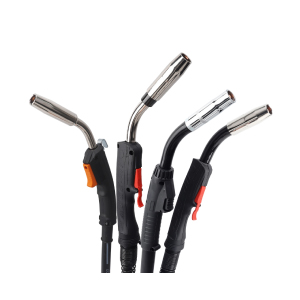Proper welding safety is paramount in any welding operation, ensuring the protection of both the welder and those in the vicinity. From personal protective equipment (PPE) to adherence to safety protocols, numerous key elements contribute to maintaining a safe welding environment. In this article, we delve into these crucial aspects, emphasizing the importance of prioritizing safety in every welding endeavor.
First and foremost, the foundation of proper welding safety lies in thorough training and education. Welders must receive comprehensive instruction on safe welding techniques, equipment operation, and hazard awareness. This knowledge equips them to identify potential risks and take appropriate preventive measures, laying the groundwork for a safe working environment.
Equally important is the utilization of suitable personal protective equipment (PPE). Proper welding necessitates the use of gear such as welding helmets, goggles, gloves, and flame-resistant clothing. These items shield welders from sparks, heat, ultraviolet radiation, and airborne contaminants, reducing the risk of injuries and long-term health effects associated with welding exposure.
Moreover, maintaining a clean and organized work area is essential for proper welding safety. Cluttered or congested spaces can impede movement and increase the likelihood of accidents. By keeping workspaces tidy and free from debris, welders can minimize tripping hazards and enhance overall safety conditions.
In addition to physical safeguards, proper ventilation is crucial in welding environments. Welding produces fumes and gases that, if inhaled, can pose serious health risks. Adequate ventilation systems, such as exhaust fans or fume extractors, help remove airborne contaminants, ensuring breathable air for welders and bystanders alike.
Furthermore, adherence to established safety protocols is non-negotiable in proper welding practices. This includes following manufacturer guidelines for equipment operation, observing industry standards for welding procedures, and complying with relevant safety regulations. Consistent adherence to these protocols mitigates risks and fosters a culture of safety within the welding community.
Regular equipment maintenance and inspection also play a pivotal role in proper welding safety. Malfunctioning or defective welding equipment can compromise both the quality of welds and the safety of personnel. Routine inspections and servicing of welding machines, torches, and other tools are essential to detect and address potential issues before they escalate into safety hazards.
Proper training and supervision of personnel are integral components of welding safety management. Supervisors should oversee welding operations, providing guidance and support to ensure compliance with safety protocols. Additionally, ongoing training sessions and safety meetings keep welders abreast of best practices and emerging safety concerns, empowering them to make informed decisions on the job.
Moreover, proper welding safety extends beyond the welding process itself to encompass storage and handling of welding materials. Flammable gases, compressed cylinders, and hazardous chemicals must be stored and handled with care to prevent accidents and minimize risks to personnel and property.
Effective communication is also essential for maintaining proper welding safety standards. Clear signage, hazard warnings, and verbal instructions help convey safety information to all personnel involved in welding operations. By fostering open communication channels, organizations can promote a safety-conscious culture and encourage active participation in safety initiatives.
In conclusion, proper welding safety encompasses a multitude of key elements, each vital in ensuring the well-being of welders and promoting a secure working environment. From comprehensive training and appropriate PPE to adherence to safety protocols and effective communication, every aspect plays a crucial role in mitigating risks and preventing accidents. By prioritizing safety in every aspect of welding operations, we can uphold the highest standards of proper welding safety and protect the health and welfare of all involved.

